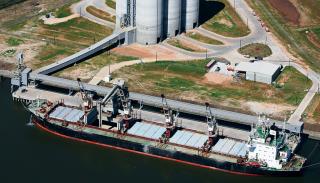Germany’s cement sector has become a world leader in alternative fuels and in recent years has seen some consolidation. While ball mill technology is still the dominant grinding technology, there is significant investment in emissions control and new kiln upgrades.
At a time of trade tensions, a pronounced slowdown in China and the uncertainty of Brexit, most European countries are struggling to find their economic balance. Germany, however, reported a record budget surplus of EUR58bn, or 1.7 per cent of GDP, in 2018 – its largest since reunification. Unemployment is also falling with an average rate of 4.9 per cent forecast for 2019 and 4.6 per cent the following year.
Europe’s biggest economy saw GDP expand by 2.5 per cent YoY in 2017, followed by 1.5 per cent in 2018, according to the IMF. For 2019 an advance of 0.8 per cent is predicted, rising to 1.4 and 1.5 per cent in 2020 and 2021, respectively. Much of this growth is expected to be driven not only by low unemployment but also solid wage increases and strong domestic demand.
